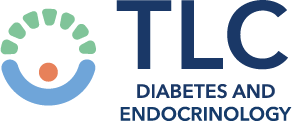Chronic Disease Education
Acute Condition Education
Working with your Family Physician
Working with Allied Care Providers
Atrial Fibrillation

Knowledge is Power.
True/False - Quiz: Do You Understand Atrial Fibrillation?
Information - Atrial Fibrillation
 Atrial fibrillation is an irregular heartbeat, also called an arrhythmia, that can increase your risk of heart failure, stroke, blood clots and other heart conditions. A normal heart contracts and relaxes to a regular beat, but if you have atrial fibrillation, the atria (upper chambers) beat out of sync with the ventricles (lower chambers). This can cause blood to pool in your atria, causing blood clots that travel to your brain and cause a stroke.
Atrial fibrillation is an irregular heartbeat, also called an arrhythmia, that can increase your risk of heart failure, stroke, blood clots and other heart conditions. A normal heart contracts and relaxes to a regular beat, but if you have atrial fibrillation, the atria (upper chambers) beat out of sync with the ventricles (lower chambers). This can cause blood to pool in your atria, causing blood clots that travel to your brain and cause a stroke.
Atrial Fibrillation Causes & Symptoms
Possible causes of atrial fibrillation include:
• Previous heart attacks
• High blood pressure
• Congenital heart defects
• Coronary artery disease
• Viral infections
• An overactive thyroid gland
Some people with atrial fibrillation have no symptoms. Atrial fibrillation symptoms can include:
• Heart palpitations
• Shortness of breath
• Dizziness
• Fatigue
• Chest pain
Atrial Fibrillation Treatment
 Atrial fibrillation isn't usually life threatening, but it is a serious medical condition that requires treatment. If you experience atrial fibrillation symptoms, consult with your doctor. Your physician may recommend an electrocardiogram to diagnose your heart condition. The goal of atrial fibrillation treatment is to restore your normal heart rate and rhythm and prevent blood clots.
Atrial fibrillation isn't usually life threatening, but it is a serious medical condition that requires treatment. If you experience atrial fibrillation symptoms, consult with your doctor. Your physician may recommend an electrocardiogram to diagnose your heart condition. The goal of atrial fibrillation treatment is to restore your normal heart rate and rhythm and prevent blood clots.
The usual treatment for atrial fibrillation usually revolves around one of two kinds of treatments. One is treatment to slow down the heartbeat to make it less rapid and less irregular. That makes most patients feel better. That strategy of slowing down the heartbeat is called rate control. That strategy does not necessarily require the heart rhythm to be restored to normal. There’s a second strategy called rhythm control, which involves treatments to get the heart back to beating normally. It may sound sensible to always want to get the heart beating regularly again, but that is not always easily achieved.
The initial treatment in most cases, when the heart is beating fast and irregularly, is to slow it down with medications that are relatively easy to take and safe. That is the rate control strategy. The rhythm control strategy may also require medications, called antiarrhythmic drugs, whose purpose it is to either restore the heartbeat back to normal or to prevent the irregular heartbeats from coming back if the heartbeat is back to normal again. Another type of treatment is called cardioversion, which are small, very safe electrical shocks to the heart, delivered to a patient who’s briefly put to sleep. The cardioversion restores a normal rapid heartbeat.
The third type of treatment is called ablation, and this is a way of putting wires inside the heart and making small burns inside the heart to get rid of the electrical short circuits that cause atrial fibrillation, in an attempt to prevent the problem from recurring. Ablation can be very effective, but it isn't for all patients.
Talk to your cardiologist if you'd like more information on atrial fibrillation.
Visit HealthChoicesFirst.com for more videos and resources on heart health.
Print this Action Plan and check off items that you want to discuss with your healthcare provider
-
The goal of atrial fibrillation treatment is to restore your normal heart rate and rhythm and prevent blood clots.
-
Rate control slows down the heartbeat to make it less rapid and less irregular.
-
Rhythm control involves treatments to get the heart back to beating normally.
-
Ablation can be a very effective atrial fibrillation treatment, but it isn’t for all patients.
-
Cardioversion uses small, very safe electrical shocks to the heart to restore a normal rapid heartbeat.


